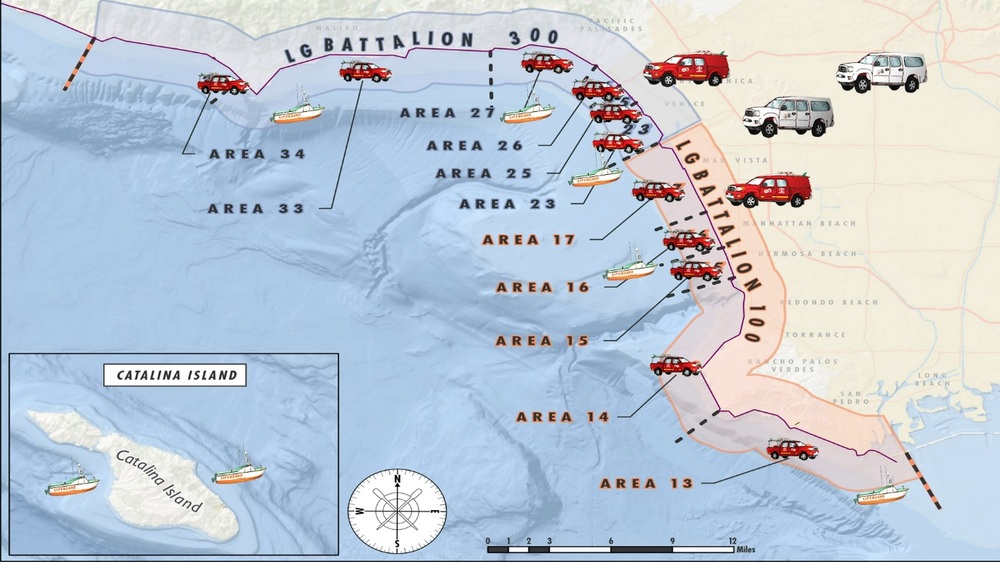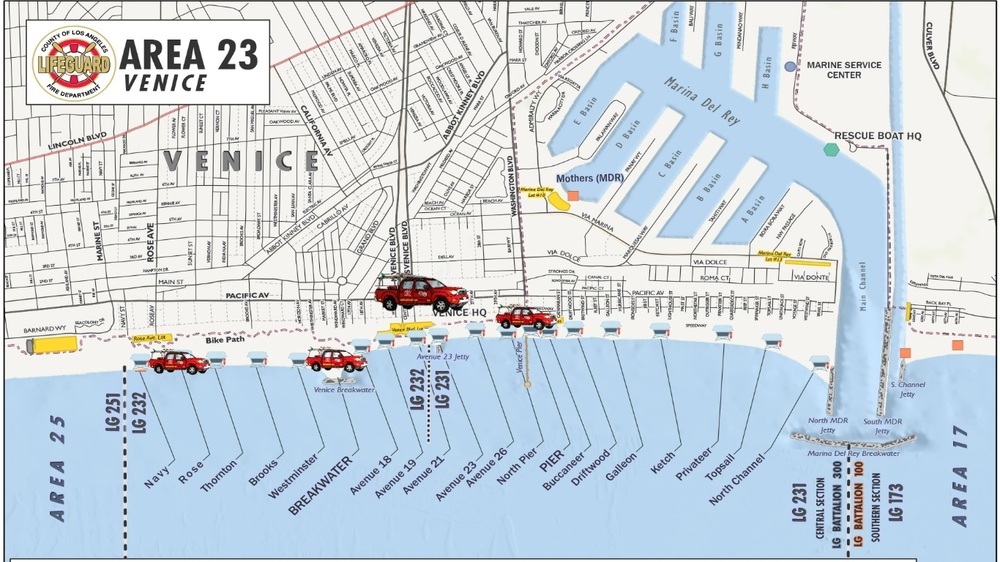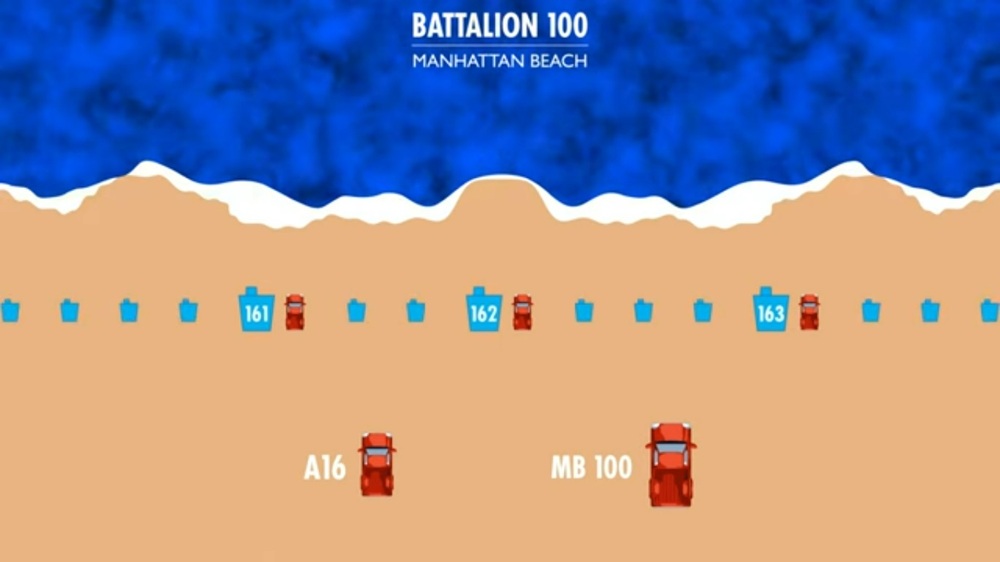
bruinmedic
Members-
Content count
28 -
Joined
-
Last visited
Posts posted by bruinmedic
-
-
1. Lifeguard Rescue units are not the same type of units as a Squad. Baywatch Isthmus and Baywatch Avalon are equipped as ALS and so would be most similar to a Squad.
2. Screen shot from this LACoFD Lifeguard Division overview. Starting from the 2:00 mark.
And lastly this screenshot from this Lifeguard Division Overview from Youtube.
-
On 7/10/2021 at 8:18 AM, LAfan26 said:The past 6 months I have been listening on the LAFD scanners that boat 17 is service? What happened to Boat 2? Did it go down for service/maintenance?
Per a previous thread, it was damaged while undergoing maintenance. I have not seen any news on the boat since. Anyone have any updates?
-
8 hours ago, Engine504Driver said:If memory serves correct, I believe its 7 engines, as well as, 1 squad, and at least 1 Superintendent (if not more) on the first alarm, in addition to what you have listed. The Super Scoopers are only a seasonal, limited-time period contract resource, generally starting around September 1st through the end of the critical fire season.
Correct for an “Augmented Brush Response”.
AUGMENTED BRUSH RESPONSE 1ST ALARM 2ND ALARM 3RD ALARM 7 ENGINES 5 ENGINES 4 CAMP CREWS 4 CAMP CREWS 3 SUPERINTENDENTS 1 WATER TENDER 3 HELOS (2 W/CREWS) 1 DOZER TEAM 1 DOZER TEAM 1 CONSTRUCTION SUPERVISOR 1 WATER TENDER 1 SQUAD 1 PATROL 1 HELITENDER 2 BATTALION CHIEFS 1 HELITANKER 2 SUPER SCOOPERS
(when available)1 BATTALION CHIEF 1 ASSISTANT CHIEF
-
Circa 2005 Response Matrices. I haven’t seen a more recent edition. Would love it if someone shared.
1st Alarm Brush:
- 5 engines
- 4 camp crews
- 3 helos(w/crews)
- 1 construction supervisor
- 1 patrol
- 1 dozer team
- 1 water tender
- 2 battalion chiefs
- 2 super scoopers (when available)
2nd Alarm Brush:
- 5 engines
- 4 camp crews
- 1 squad
- 1 water tender
- 1 construction supervisor
- 1 dozer team
- 1 helitender
- 1 helitanker
- 1 battalion chief
- 1 assistant chief
-
-
13 hours ago, 41engine41 said:Why does LACoFD use the Bells for the east area copter duty? Shame they dont get more of a look in with the San Gabriel Mountains and ANF area. Seems LA Sheriff Air Rescue 5 has the ANF and mountains for SAR ops. Often hear them working with FS 82s and 79s units up in the mountains along with USFS fire units on SAR missions and traffic collisions
I do not know why LACoFD has a preference for Bells in east county. Rescue 5 is closest resource to those areas when they are on alert at Barley Flats. If they are doing training elsewhere... say Catalina, you'll get the closest LACoFD resource.
-
On 11/20/2019 at 6:03 AM, e5911 said:Correct me if I'm wrong, but Blackhawks still are not type certified for civilian use til they are converted to Firehawks
Several companies have either recently completed or are in the final stages of certifying Blackhawks for civilian use.
Coulson-Unical has N160CD at Fullerton Airport. It does not have the raised landing gear as the Firehawks and appears to have an internal water tank.To make matters confusing:
- United Rotorcraft modifies Blackhawks into Firehawks ®. This modification raises the landing gear and installs a belly tank.
- Firehawk Helicopters also modifies Blackhawks for firefighting. This modification does not have raised landing gear and has an internal water tank.
-
According to this 2016 analysis LACoFD currently operates 3 Firehawks, 3 EPs and 2 HPs(pg 13 of the PDF). I believe the two S70i Firehawks are still being fitted out in Colorado. The non EP/HP 412 has been written off. Referring again to the analysis, all the 412s have a 360gal tank and the 412 was the preferred East County Air Squad(pg 89). There appears to be no operational difference between the EP and HP, although a pilot or mechanic could explain otherwise. Perhaps less fuel could be carried to mitigate any performance limitations? Eastern Air Operations may have changed after Pomona Valley Hospital became a Level II Adult Trauma center. Those patients no longer have to be flown to County USC. I cannot speak as to which are preferred by the crews. Maintenance determines aircraft availability. There are scheduled and unscheduled maintenance items. Scheduled items would be similar to changing the oil in your car, in the case of aircraft it is determined by flight hours. Unscheduled maintenance is similar to when the check engine light suddenly appears. Finding out what the issue is and obtaining replacement parts(if they are not on the shelf) can be time consuming.
-
The squads also have better access in the vast parking structures found on the hotel or airport properties.
-
46 minutes ago, Stinger said:Clark county rescues have extrication tools on board does lv have the same?
They did with the Rescues that were Freighliners. I’m not sure if the Chevys have extrication tools.
-
Too add on:
Clark County Fire staffs their rescues: Engineer + FF/Medic or Engineer/Medic + FF
Las Vegas Fire staffs their rescues: FF/Medic + FF
-
The Rescues have extrication equipment in addition to the ALS ambulance equipment. In town, it is staffed with an engineer and a FF, one of which is a medic. The engineer can be the supervisor on scene, thus an Engine with a Capt is not assigned to every medical call. If the private ALS ambulance has an extended ETA or have notified FAO they are unable to respond, the Rescue can choose to initiate transport to not delay care. Or in the case of rural areas such as Mt Charleston(not ALS), the Rescue can initiate transport with a planned meeting point with the private ALS ambulance. Rescues could also transport during a MCI or if the patient is CCFD or CCFD family.
Rescue 13 is at the airport and is not an ambulance. It looks like a LACoFD squad.
Squad 32 also looks like a LACoFD squad. To my knowledge it is the only ALS and career staffed Squad. The rest of the Squads are staffed by volunteers at rural stations.
-
Anyone have any info on this new truck? What station will it go to? Is this an addition or a replacement?
-
Anyone have any info on this potential agreement? Where the aircraft be based at? What type of aircraft?
-
What is the arrangement between LASD Air Rescue 5 and the LaCoFD Air Squads?
-
In addition to more backboards, LACoFD Heavy Squads carry additional trauma gear (bandages, IVs), the triage tarps and two large oxygen bottles(not portable, forgot what size). Multiple patients can receive 02 from the system. No extrication gear. No special boards for geriatric or bariatric patients. This was 2009 timeframe.
-
Can Truck 6 go on the same type of USAR tech calls as T9 and T34 or would they have to staff the heavy rescue?
-
Will the tiller fit in Sta 46?
-
-
Yes there will be additional staff at 80's and it will be interesting to see how much room will be left at 80's with 6 crash rigs and the stairs unit.
If I recall correctly 80's was staffed with a Captain II, Captain I, Engineer, 3 A/Os and 8 FFs. Is this still the case? Any word on the ranks of the additional staff and riding assignments?
-
in California
Generic is correct. They are typically configured for patrol with a seat in the front left position. Pilot sits front right. In order to transport they would have to remove the front left seat. The patient lays on their back, feet forward extending to where the seat was.
Their A-Star aircraft are also equipped with a hoist for rescue operations. These situations would require a trained firefighter to assist.
-
Will there be additional staffing at 80's?
-
-
Does the HAZMAT have its own crew? Or is it cross-staffed from the engine?




in California
Posted · Edited by bruinmedic
additional information
Picture of Baywatch Avalon's Squad
Picture of Baywatch Isthmus's Ambulance
In addition to their ALS Paramedic gear, these two units (BWAVA, BWISM) carry extrication tools and dive equipment.